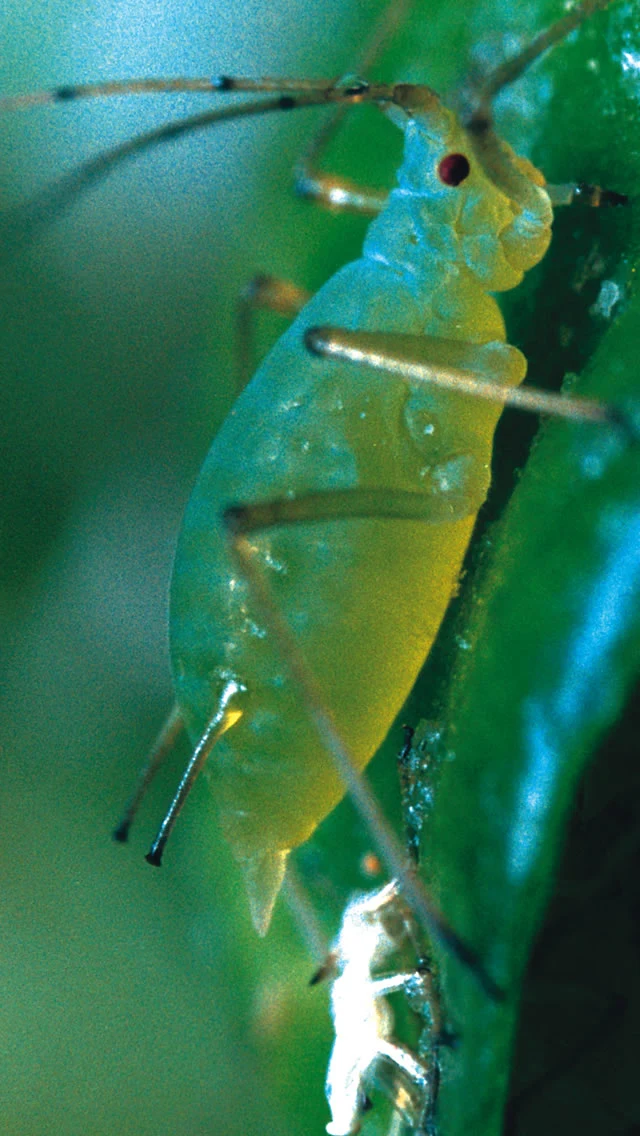
Pea Aphid
Acyrthosiphon pisum
Identification
The adult form is either pale green or pink and is relatively large, 2.5-4.4 mm long.
Symptoms
Direct feeding on the growing points of peas causes the characteristic distortion and yellowing of leaves and pods. Crops beginning to flower are most at risk. This aphid can transmit more than 30 viruses including pea leaf roll virus, pea enation mosaic virus, pea mosaic virus and pea seed-borne mosaic virus. It is also known to transmit bean leaf roll virus in beans.
Life-cycle
The pea aphid spends its entire life-cycle on leguminous plants. The eggs and active forms overwinter on plants such as clover, lucerne, sainfoin and trefoils. The eggs hatch in February and March, and in suitable conditions the winged forms migrate to crops of peas or other legumes in May. In the autumn the aphids migrate to their overwintering sites.
Importance
Pea aphids are an important pest for pea growers and a direct yield loss of up to 40 % can be sustained if pest numbers are high at early flower.
Threshold
Treatment should be considered when aphids are found on 15 % of plants at early flower.

Pea aphid colony

Pea aphid adult in close-up

Pea aphid are relatively large aphids with long legs


